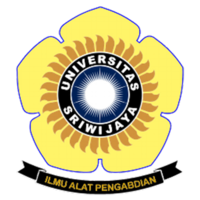Pengembangan Pengendalian Hayati Hama Sawit dan Pajale
Abstract
Herlinda et al, 2019. Development of Biological Control for Pests of Oil Palm and Rice-Corn-Soybean. pp. 1-12.
Biological control for pest insects is an activity of predator, parasitoid or entomopathogen in decreasing pest populations, it makes the populations lower. This paper was written based on information and both primary and secondary data. The development of biological control in oil palm plantations was currently dominated by conservation of predatory arthropods and parasitoid by utilizing refugia. The refugia that were widely used were Turnera subulata, Turnera ulmifolia, Antigonon leptopus, and Cassia cobanensis. In addition to refugia, palm oil plantations currently utilized a lot of entomopathogens, both entomopathogenic fungi and viruses. Entomopathogenic fungi that had been widely developed were Metarhizium anisoplia, Metarhizium majus, and Cordyceps militaris, while entomopathogenic viruses were used, such as the Nudaurelia ß virus and Multi-Nucleo Polyhydro Virus (MNPV) and Rhabdionvirus oryctes. The use of parasitoid in oil palm plantations was not as intensive as the use of entomopathogen and refugia. The development of biological control in rice, corn, and soybeans (“pajale”) generally used conservation approach for natural enemies that prioritized habitat management, for example intercropping which was able to provide habitats and niches for predators and parasitoids. The use of entomopathogens to control pests in “pajale” was less intensive because it is constrained by the micro climate in “pajale” ecosystems was less ideal, due to fluctuations in temperature and humidity are relatively more higher than in the oil palm ecosystem. The predators that were dominant in “pajale” were hunter spiders, for example Pardosa pseudoannulata while predominantly parasitoid was oligophagous or polyphagous parasitoids. Thus, it can be concluded that the development of biological control in oil palm and “pajale” is slightly different, in oil palm natural enemies are easier to settle because the ecosystem is more stable, whereas in “pajale” ecosystems, the natural enemies of the entomopathogens are less able to settle due to less stable micro climate.
Full Text:
PDFArticle Metrics
Abstract view : 1347 timesPDF - 3743 times
Refbacks
- There are currently no refbacks.

